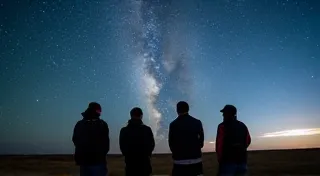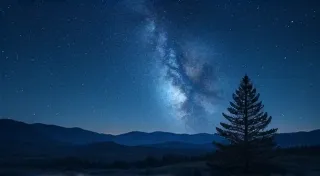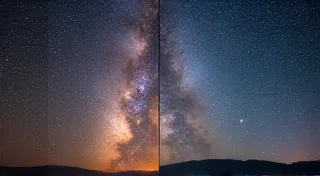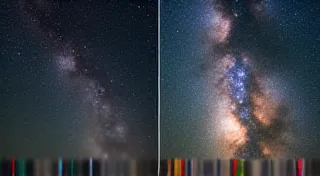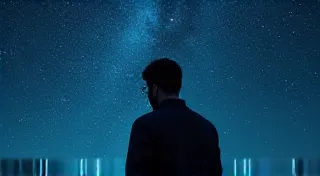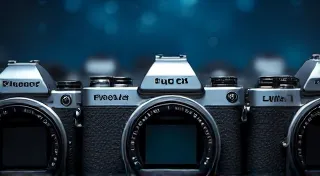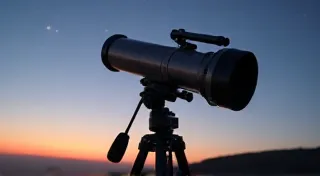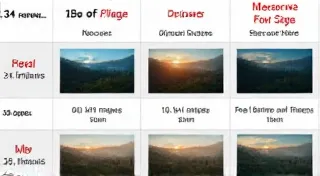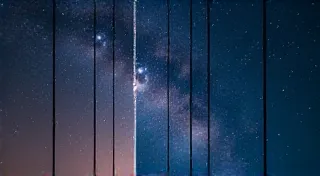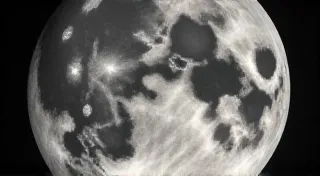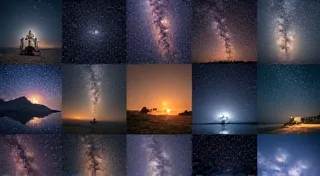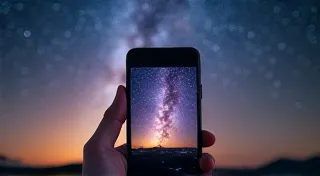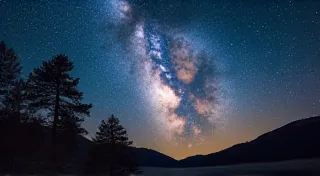Unlock the Universe: Your Guide to Astrophotography
Welcome to the Astrophotography Academy! Are you fascinated by the night sky and dream of capturing its breathtaking beauty? This is the place to start your journey. From sprawling galaxies to shimmering nebulae and the intricate details of our own moon, astrophotography offers a unique blend of science, art, and adventure. Whether you'll be capturing a wide-field view or focusing on a specific DSO, understanding night sky photography is essential. This isn’ll just about taking pictures; it’s about unveiling the universe, one stunning image at a time. Our goal is to give you a solid foundation in both astronomy and the practical skills to achieve your creative vision.
Astrophotography is more than just pointing a camera at the stars. It requires a blend of technical understanding, artistic vision, and a healthy dose of patience. We’ll break down those complexities into manageable chunks, providing you with the knowledge and inspiration you need to succeed. Learn the essential image processing techniques necessary to reveal the hidden beauty of the cosmos.
Getting Started: Essential Knowledge & Equipment
For many, the first question is: What do I need to get started? The good news is you don't need the most expensive gear to capture some truly remarkable images. Our guide, Essential Astrophotography Equipment for Beginners, provides a comprehensive overview of the tools you'll likely need, from cameras and lenses to telescopes and mounts. We’ll discuss the pros and cons of using a DSLR, a mirrorless camera, or a dedicated astro camera, helping you choose the best option for your budget and goals. You can read about different types of cameras in our article: Choosing Your First Astrophotography Camera: DSLRs vs. Mirrorless vs. Dedicated Astro Cameras.
Understanding the fundamentals of exposure is critical. Too much or too little light, and your image will be washed out or hopelessly dark. Our article, Understanding Astrophotography Exposure: A Beginner's Guide, breaks down the concepts of ISO, aperture, and shutter speed in the context of capturing faint celestial objects. Then, there's the challenge of accurately tracking those objects as the Earth rotates. For that, you'll need a stable telescope mount. Learn about different types of mounts and how to choose the right one in our guide: Choosing the Right Telescope Mount for Astrophotography.
Mastering the Technical Aspects
Once you have the basics covered, it's time to delve into the more technical aspects of astrophotography. Capturing faint light is a challenge, and often requires long exposures. This introduces problems like noise and imperfections in your data. This is where calibration frames come in. These seemingly small images – darks, flats, and biases – are vital for cleaning up your final image. Learn everything you need to know about these crucial elements in our in-depth guide: Astrophotography Calibration Frames: Darks, Flats, and Biases.
Even with perfect exposure, further refinement through image processing is often required to unlock the full potential of your data. Mastering photography techniques like stacking and post-processing can dramatically improve the quality of your images. Another major hurdle is dealing with Earth's rotation. Accurate polar alignment is absolutely essential for long-exposure astrophotography. Even a slight misalignment can result in blurry, useless images. Our detailed guide, Mastering the Polar Alignment Process for Astrophotography, will walk you through the process step-by-step, ensuring you get sharp, pinpoint stars.
Your raw images will likely be noisy and lack detail. This is where image stacking comes into play. By combining multiple exposures, you can dramatically increase the signal-to-noise ratio and reveal incredible detail. Learn how to stack your images effectively in our tutorial: Stacking Astrophotography Images: Increase Signal-to-Noise Ratio. After stacking, the fun really begins: post-processing! Dive into the essentials of image processing with our guide: Post-Processing Astrophotography Images: A Beginner's Workflow. Learn new photography techniques to bring out the brilliance of your subjects.
Exploring Celestial Targets
Now let's talk about what you can actually photograph! The night sky is filled with incredible targets – galaxies, nebulae, and star clusters that lie far beyond our solar system. Our introduction to DSOs will get you started: Introduction to Deep Sky Object (DSO) Astrophotography. Nebulae, in particular, are stunning subjects. Capture the transient beauty of these vast clouds of gas and dust in our article: Ephemeral Bloom: Capturing the Transient Beauty of Nebulae. A good grasp of astronomy is essential to understanding and finding these targets.
Navigating Challenges & Best Practices
Light pollution is a major obstacle for many photographers, obscuring the faintest objects in the night sky. Our guide, Understanding Light Pollution and How to Minimize It, provides practical tips for mitigating the effects of light pollution and finding darker skies. Then, there's the important matter of etiquette. Respecting dark skies and fellow photographers is crucial for maintaining access to these precious resources. Read our guide to astrophotography etiquette: Astrophotography Etiquette: Respecting Dark Skies and Fellow Photographers.
Your images also need to be sharp, but what about those cool patterns of light that sometimes appear around bright stars? Learn how to interpret and understand those patterns in our article: Fractured Light: Mastering the Art of Diffraction Spike Interpretation. Further improving photography techniques like careful focusing can also dramatically improve results. Specifically, taking advantage of the darker regions of the night sky can make a world of difference.
Sharing Your Work & Building Your Portfolio
You’re creating amazing images – now it’s time to share them with the world! Sharing your astrophotography is a great way to connect with other enthusiasts, receive feedback, and showcase your skills. Our guide provides tips and strategies for building a portfolio and establishing an online presence: Sharing Your Astrophotography: Building a Portfolio and Online Presence.
Finding Narrative and Inspiration
Beyond the technical aspects, astrophotography can be deeply rewarding on a creative level. Sometimes, the most profound images aren't just about capturing a beautiful picture, but about finding a deeper narrative within the cosmos. Explore the subtle beauty and subtle grandeur of the galactic background in our article: The Silent Echoes: Finding Narrative in the Galactic Background. For those starting with limited equipment, check out our article on how to take stunning images with your smartphone: Astrophotography for Smartphones: Tips and Tricks. And if you are focusing on wide-field imagery, don’t miss our guide to Widefield Astrophotography: Capturing the Milky Way's Grandeur. A solid understanding of astronomy will enhance your appreciation and artistic vision. Capturing the subtle details of the night sky requires patience and skill.
We hope you found this introduction helpful. The journey of astrophotography is a lifelong pursuit, filled with endless learning and discovery. So, grab your camera, find a dark sky, and start exploring the wonders of the night sky!
Happy shooting!

